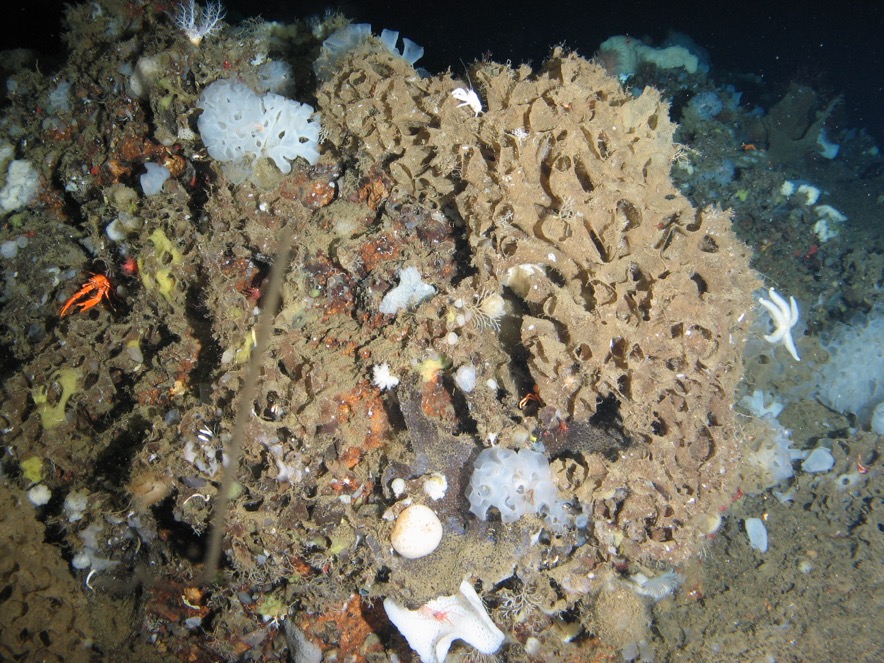70 km to the North from Bering Island, another sight of the reserve is hidden under water. It is Piip Volcano – the highest point of Volcanologists’ Solid Mass central part. It is the only active underwater volcano in Kamchatka-Commander region, which was discovered in 1984. It is also the only spot on the Russian Federation map with black smokers – hydrothermal vents with cylindrical structures formed by minerals from the vent fluid. Until now, the majority of research in the area concentrated on geology and geophysics, while we knew little, if nothing, about the dwellers of this underwater ecosystem.
To describe the deep-water world of Volcanologists’ Solid Mass and the volcano a team from Marine Biology Research Institute of RAS Far East Division came to Kamchatka in summer 2018. The scientists’ attention was on the upper part of the volcano and its southern slope. Analogous research of the northern slope took place in 2016. Using a remotely piloted vehicle called Komanch-18, the researchers dived as deep as 3931 meters and were searching for local lifeforms going up the slope.
The benthic fauna struck the team with abundance of species and diversity of beautiful and old creatures. For example, they saw the so-called sea cucumber or holothurian. Big groups of these echinoderm invertebrates were seen on the maximum depths. They seem not to mind the low temperature of only 1-2 degrees Celsius and utter darkness.
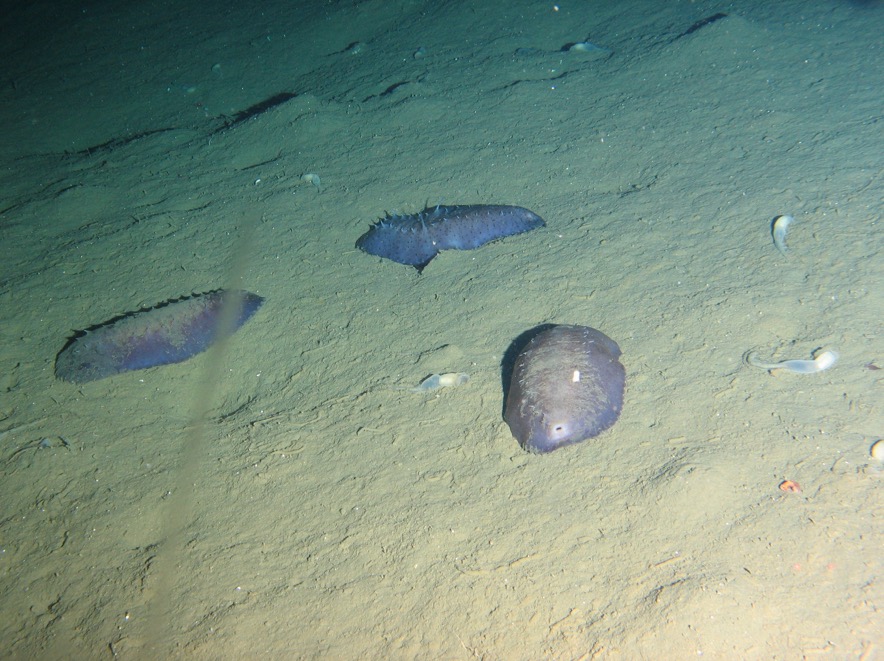
Holothurians Synallactidae and Enteropneusta at depth of 1960 meters
Other widespread group of creatures is corals. In the deepest waters, groups of holothurians can be seen together with singular soft corals.
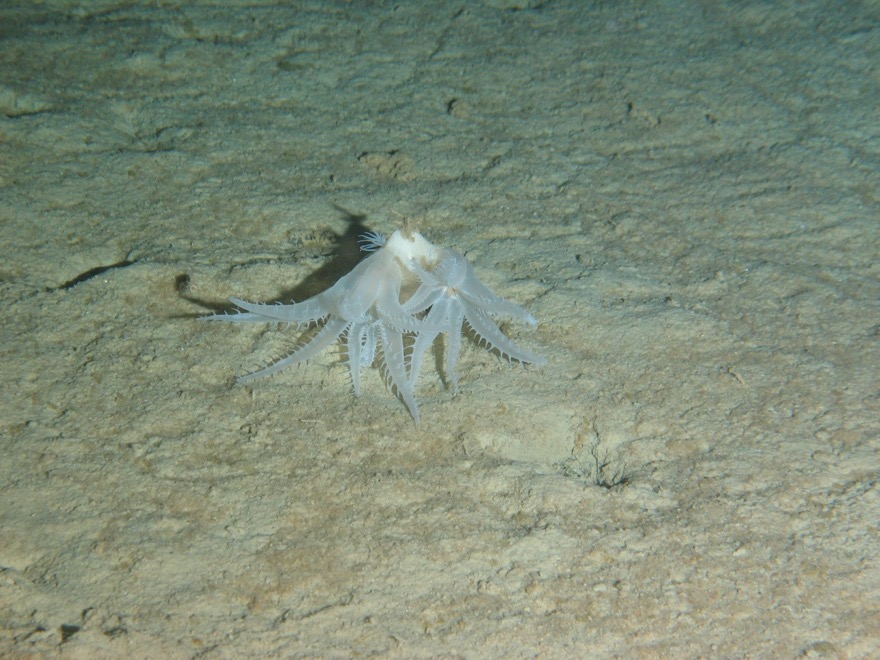
Soft coral Anthomastus robustus at 3931 meters
A bit closer to the surface, at 3660 meters, hydrocorals and sea anemones inhabit hard-rock outcrop. Corals are accompanied by spherical sponges, which do not have any real tissues or organs. They feed by filtering the water around them.
As we come to the southern rocky slope of the volcano, at 2824 meters, the benthic fauna is represented by sea shelly creatures such as brachiopods and Polychaeta worms or serpulidae. The slope is looking beautiful with sponges and sea fans (gorgonian Narella sp.) on it. The latter are one of the most exquisite deep-water creatures and serve as a trap for plankton.
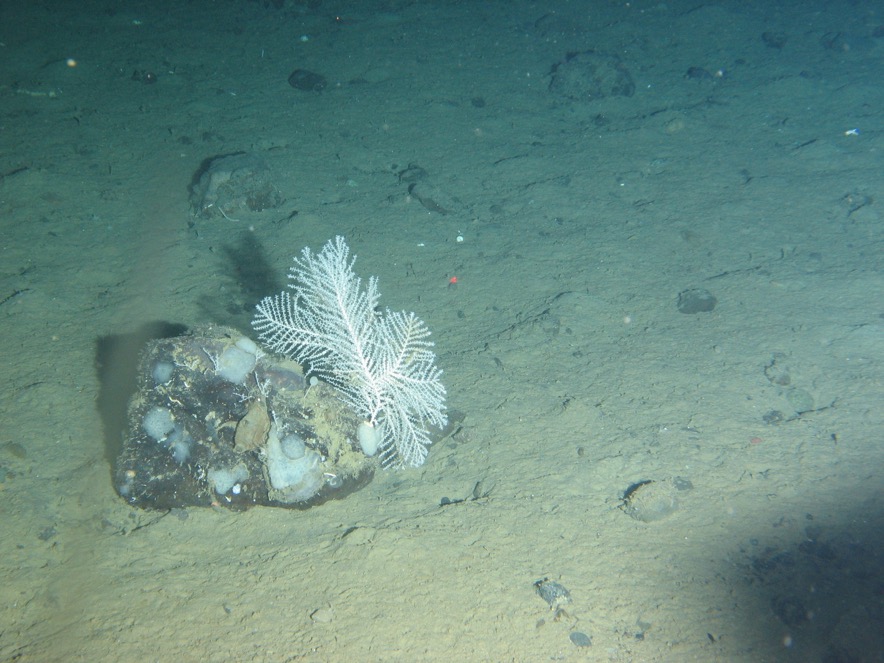
Gorgonian Narella sp. at 2641 meters
At 1877 meters, we see other wonderful species – sea plumes. These coral polyps like soft substrate, to which they adhere with their muscular wide septum. The sea plums stay on the same place for the majority of their lives though can move slowly if needed.
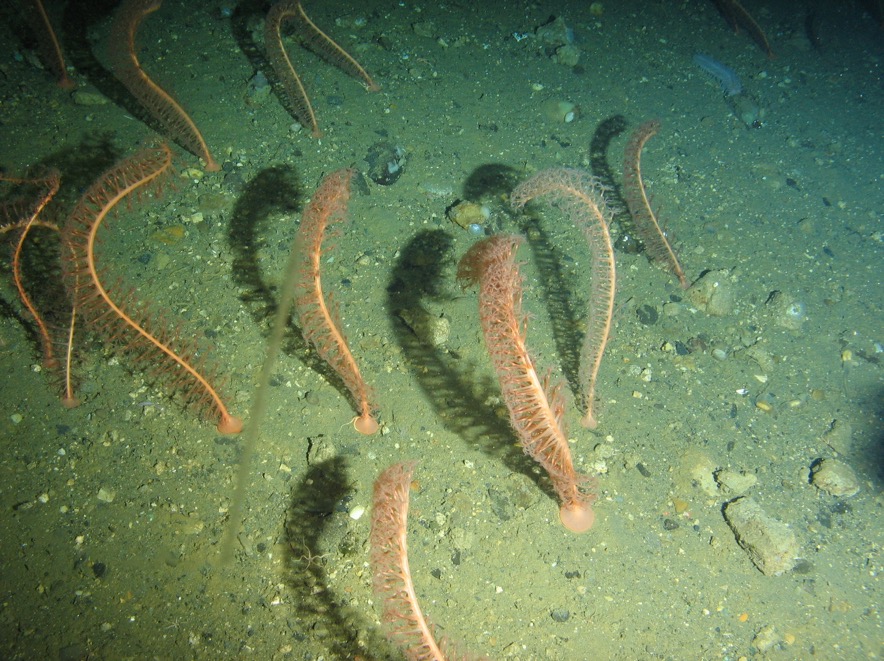
Sea plums Anthoptilum grandiflora at 1687 meters
At 1000 meters, we see the kingdom of sponges both dead and alive. The reefs demonstrate a lot of life such as crabs, cancers, hydroids and many other.
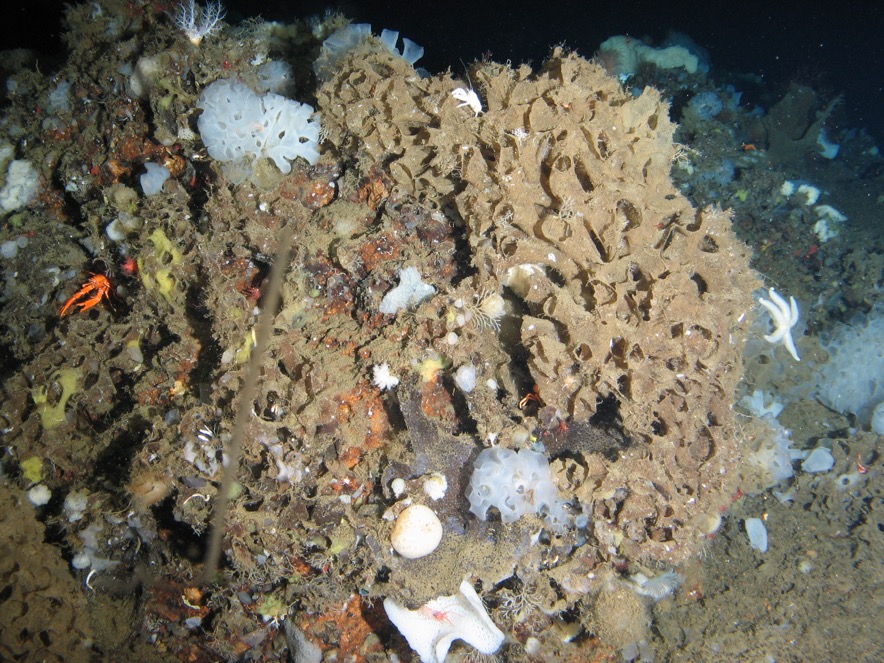
Sponge reef at 978 meters
We are coming up to 500 meters depth and see colorful soft corals – alcyonarians and corallimorpharias. There are especially numerous in hydrothermal venting zones.
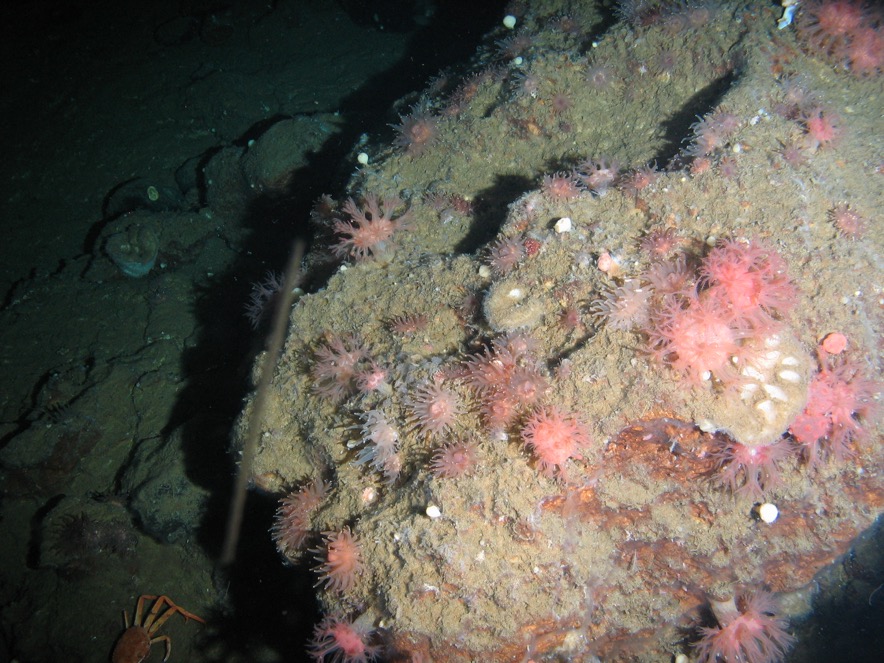
Alcyonarians Anthomastus ritteri and corallimorpharias Corallimorphus sp. together with Demospongia sponge at 460 meters
Near the top part of the volcano, we observe bacterial tufts, which look like moldy membrane. They appeared because of large quantities of methane, hydrogen sulfide and carbon dioxide incoming to the water.
Each of the expeditions brought data about new organisms, which are still waiting to be described properly. Though the researchers are sure that there is more to discover as they have more spots for probing the substrate, which may hide other unknown creatures.
We express our gratitude to PhD Biology and head of the expedition Vladimir Mordukhovich for the provided photos.









